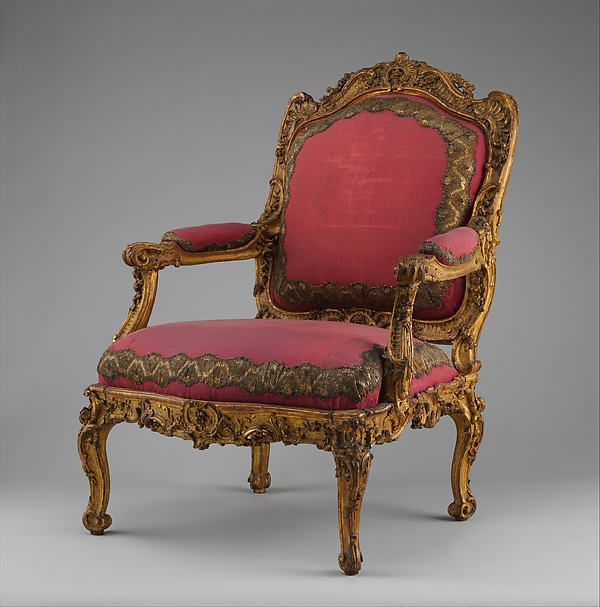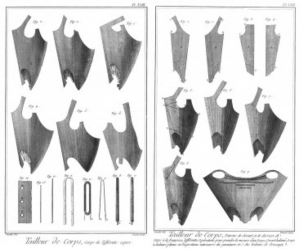UP AGAINST THE BODY

18-century chairs were designed for comfort. The angle of chair backs was exactly the same as the angle of the stays stiffened with whalebones that women wore. Though in many paintings women are shown bolt upright, leaning forward from the backs of chairs, perhaps because being painted was a formal occasion, it was possible for women in stays to lean back against their chairs.
This rendering by Professor Anne Higonnet illustrates how the boning and stitching of the stays women wore (which were the eighteenth century version of corsets, constructed with whalebone as opposed to metal) were perfectly designed to coordinate with the incline of the chair backs. The stays helped to improve posture, holding the woman’s shape rather than transforming it. Thus, contrary to popular belief, the furniture was far more comfortable that the stools preceding them.
Diderot’s Encylcopédie plates (below) reveal the structure, boning and flexibility of these stays.


